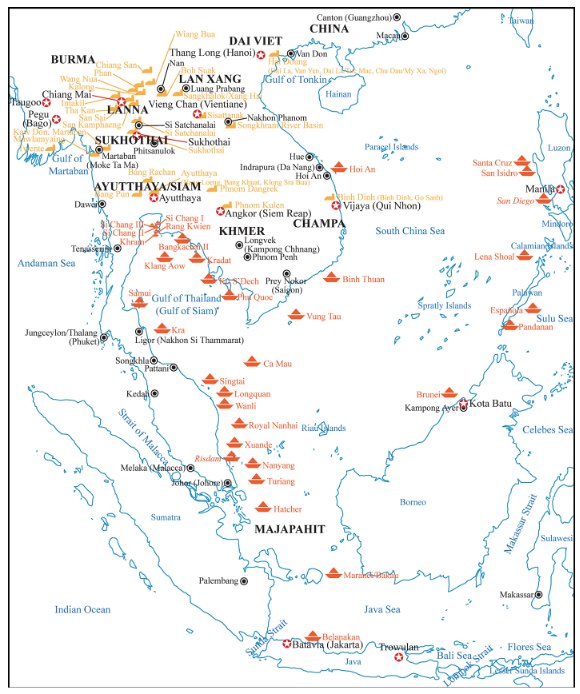Archeological Sea Damage on Shipwreck Yixing Teapots
Shipwreck Yixing wares range in period, quality, and usability. Regional trade junks, European merchant vessels, tea clippers, and warships carrying zisha teapots plied the ocean waves before succumbing to their watery graves. For our interests, focusing only on the Ming (1368 – 1644 CE)[1] and Qing (1644 – 1911 CE) dynasties, the majority of these wrecks are found in the South China Sea. There are fewer than 200 shipwrecks in the South China Sea with substantial East or Southeast Asian ceramic cargo publicly known[2]

Yixing teapots recovered from shipwrecks generally fall into two categories: those produced for the overseas Chinese communities maintaining cultural tea practices of their home regions of southern China; and those teapots made explicitly for export to Europe. Different classes of merchant ships carried each of these distinct sets.
Regional merchant ships trawling the “Maritime Silkroad”, a vast network of trade routes connecting China to Southeast Asia crewed by sailors indigenous to those locals, generally carried a larger number of lower-quality Yixing teapots. These teapots were daily use wares, in the standard Late-Ming and Qing dynasty shapes, most often the popular Mengchen Pear (often bearing the apocryphal mark)[4] and Si Ting (思亭)[5] designs. The shape and relatively small size of these teapots were (and remain) suitable for the high-roast tea exported from Southern China in the latter half of this period and reflect the small-pot brewing practices of the originating southern Chinese overseas-communities.
This page is for paying subscribers only
Subscribe NowAlready have an account? Log in